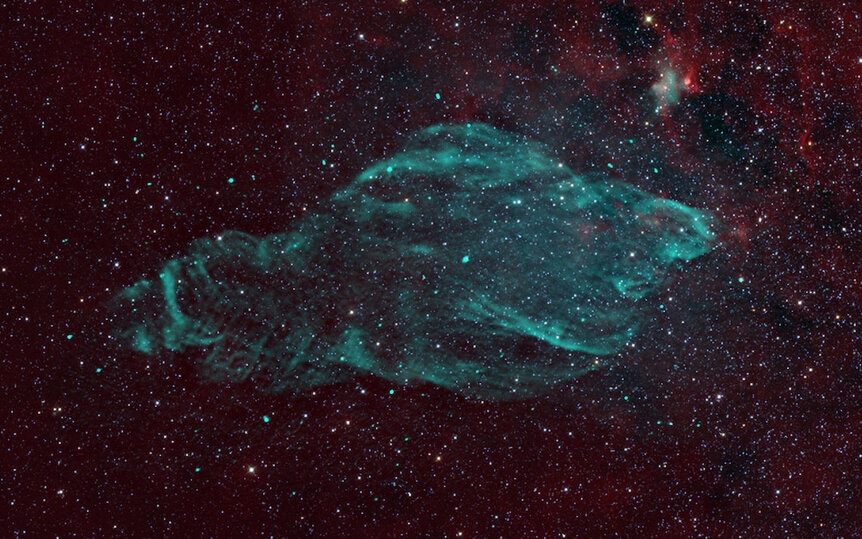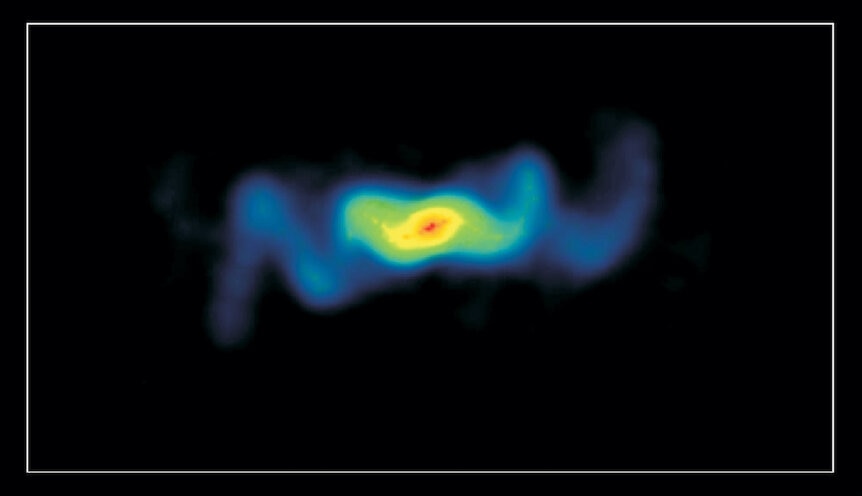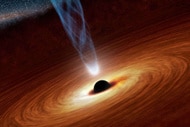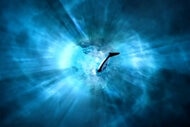Create a free profile to get unlimited access to exclusive videos, sweepstakes, and more!
Oh, the huge manatee: A natural particle accelerator quadrillions of kilometers long
The Manatee Nebula is shooting out hugely energetic subatomic particles.
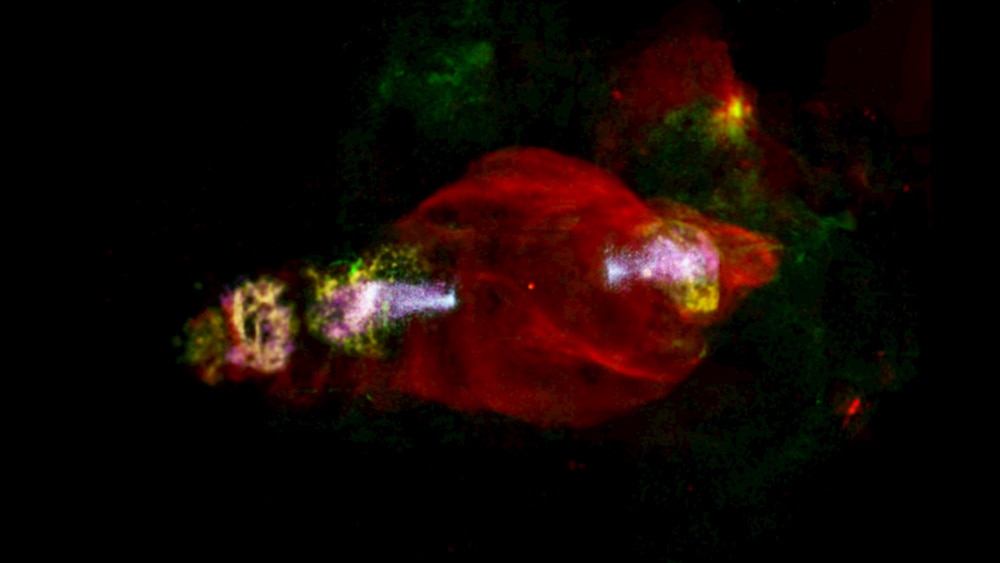
So, a gaseous manatee 650 light-years across is shooting out extremely high-speed subatomic particles, and while we don’t know exactly why we do know what part they’re coming from.
Right, yeah, let’s back up a bit.
Westerhout 50 is an immense nebula, a gas cloud in space about 18,000 light years away. It’s a supernova remnant, the gas expanding away from a star that exploded long ago. But it’s weird. For one thing it’s elongated, forming a rough ellipse a staggering 350 by 650 light-years in size — 3.3 by 6.2 quadrillion kilometers! — much larger than most other remnants. Seen in radio waves it appears wispy and structured, and really does look like a sea cow swimming past us on its side, earning it the moniker Manatee Nebula.
At its heart is a black hole, and it’s weird too. Called SS 433, it’s what’s left of the star that exploded to form the nebula. The outer layers of the star blasted away, but the massive core of the huge star collapsed to form the black hole. It has a binary companion, a star that orbits it relatively close in, so much so that the fierce gravity of the black hole is tearing material off the star. That stuff falls toward the black hole and forms a hot disk swirling around it.
Powerful magnetic fields permeate the disk, wound up like twin tornadoes centered above and below the black hole. Material is pulled up and away from the disk by this magnetic field and sent screaming away at about a quarter the speed of light. This forms twin beams, like a lighthouse searchlight, which astronomers call jets. Oddly, they don’t shoot straight away form the black hole. The gravity from the companion star yanks on the disk of matter, torqueing it, and in response the disk nutates, slowly wobbling. Over time this means the jets are aimed in different directions — this is called precession — so they actually form huge spirals, like a corkscrew.
Some years ago astronomers made an astonishing discovery: The Manatee was sending out high-energy X-rays, a kind created when electrons are accelerated to truly mind-crushing energies: 300 – 450 tera-electonVolts. That’s roughly the same amount of energy as a small raindrop falling from the sky.
OK, that sounds small, but we’re talking that much energy in a single electron. There are sextillions of electrons in that drop of water, so whatever is juicing up the electrons in the Manatee nebula, it’s giving them energies a billion trillion times the amount they normally have just sitting around. So yeah, it’s a lot.
The black hole and its magnetic fields are the obvious culprits, but how are they physically firing up those electrons?
It would help to know exactly where the X-rays are coming from in the nebula; they are the physical evidence of the particle acceleration, so they could provide a big clue. Early observations couldn’t say, but new observations using the space-based XMM-Newton and Chandra X-ray Observatory have made a big step in understanding this physical process [link to paper].
Surprisingly, they show the X-rays are not coming from the black hole SS433, at least not directly. Instead, there’s a clumpy splattery-looking structure that starts about 100 light-years east of the black hole, something that looks like a fountain, and the X-rays come from there.
Now that’s very interesting indeed. The Manatee, remember, is elliptical, whereas most supernova remnants are roughly circular. It turns out the elongation of the gas is aligned with the directions of the jets coming from the black hole, and it’s very likely the material blasting away from SS433 is what’s inflated the much bigger nebula along one axis, making it elliptical.
This new structure seen in the XMM-Newton data is also aligned with this elongation (in some descriptions of the nebula the manatee’s head is to the west, and these particles are coming from, um, the other end, so make your own jokes here). That implies very strongly that the eastern-blowing jet from the black hole is somehow to blame here. It’s not clear how, to be honest, but I wonder.
We know that in supernova remnants the gas expands at different velocities, and sometimes a cloud of gas will catch up to and slam into a slower moving cloud. This compresses both, forming lovely sheets and filaments, which we see in the Manatee. This also creates colossal shock waves. The physics is complicated, but subatomic particles like electrons can get caught up in the magnetic fields of the gas clouds, and as the clouds collide the particles can be accelerated to ferocious velocities. When an electron like this hits a photon of light, that photon gets pumped up to huge energy, like X-rays and even gamma rays (we call this inverse Compton scattering).
This could explain what’s going on; the black hole jet slams into the pre-existing supernova gas, creates extremely powerful shock waves, electrons get caught up and massively caffeinated by them, which then create the X-rays seen by XMM-Newton.
That’s a nice story, but there are plenty of details that aren’t explained by this, including just how the particles got to such high energies. Models show that’s difficult, so there may be a lot more going on here. Still, it’s a good starting point.
I remember when SS433 was first discovered and caused a foofooraw in the astronomical community due to its odd behavior, later traced to the precessing jets. And now, decades later, we’re still discovering strange behavior from this thing. But then that’s the fun of this all, isn’t it? The more you learn about giant space manatees being shaped by active black holes blasting out particles and radiation, the more there is to learn.
